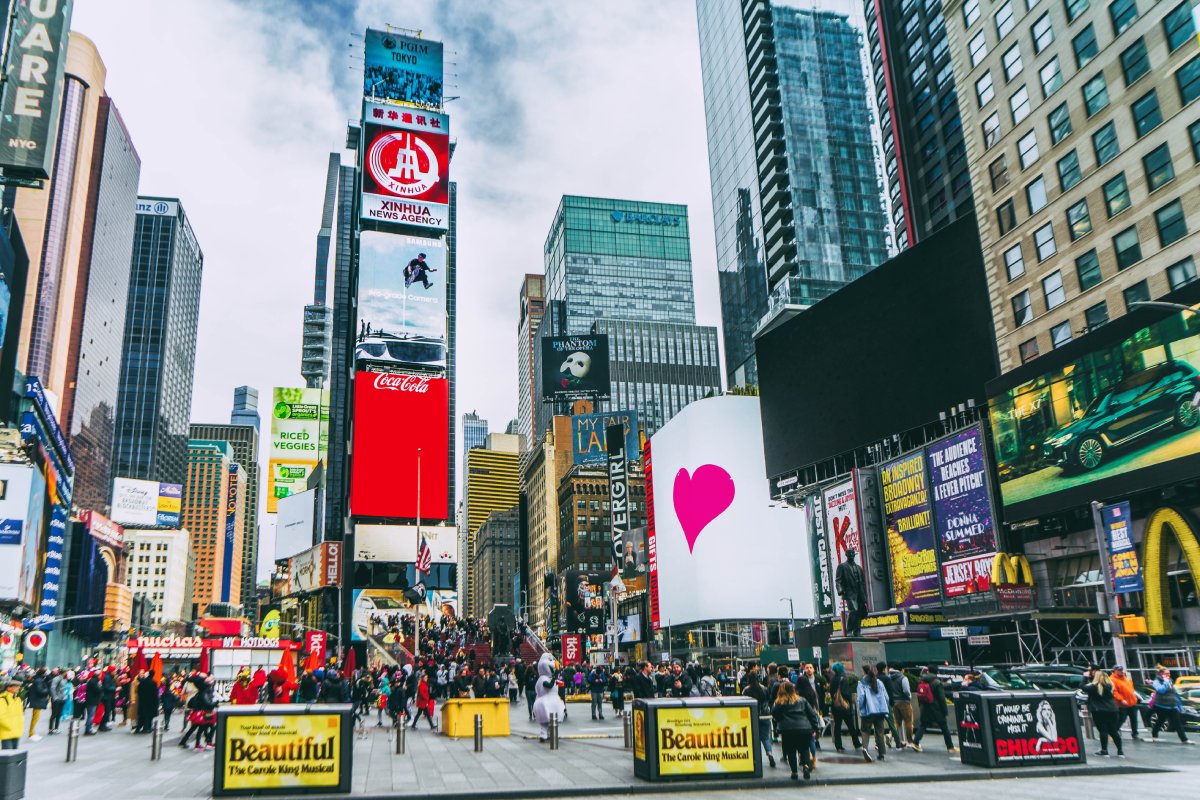Skift Take
China's economic weakness, city downtowns in trouble, visa delays – these are just some of the issues holding back travel. We will be talking about them with tourism executives at the Skift Global Forum in September.
With the pandemic now over, what’s the future of tourism? What does the decline of full-time office employees mean for tourism and business travel? Why hasn’t U.S. solved its visa delay mess? We’ll discuss these topics with the executives of NYC Tourism+Conventions, U.S. Travel Association, Visit Britain, Intrepid Travel and others on-stage at the Skift Global Forum in New York on September 26-28.
1: Why Hasn’t the Visa Delay Mess Been Resolved?
Overseas travel to the U.S. was 78% of its pre-pandemic levels in July, an improvement from 73% in June, the U.S. Travel Association reported last week. But what’s holding the U.S. back from a full return?
One reason is that millions of travelers have to wait over 400 days to get an interview for a visitor visa at many U.S. embassies. That includes would-be tourists from Brazil, India, Mexico and China.
“To grow, we have to be able to attract new travelers who need visas,” NYC Tourism +Conventions President and CEO Fred Dixon told Skift.
Wait times have remained stuck at over 400 despite the State Department’s initiatives like interviewing applicants on weekends. U.S. Travel Association CEO and President Geoff Freeman will talk about why that’s the case.
2: When Are Chinese Tourists Finally Coming Back?
Chinese tourists, the U.S.’s top spenders at over $30 billion before the pandemic, are still not back. Their absence has slowed the tourism recovery of San Francisco, Los Angeles, Washington D.C., New York and many other destinations. Brand USA CEO and President Chris Thompson said there’s no recovery for the U.S. without them.
There have been some positive steps in recent weeks. China lifted its ban on the U.S. as a destination for outbound group travel. The U.S. and China have agreed to start increasing the number of flights between them.
But what’s happening on the ground in China? What’s the demand look like? NYC Tourism + Conventions CEO and President Fred Dixon, who will have just come back from his first post-pandemic trip to China, will give insight into how the market is doing.
3: What Do Empty Downtown Offices Have to Do with Tourism?
During the pandemic, cities became ghost towns and lost tourists. Now, the pandemic is over, but they have not fully recovered and have some long-term challenges: vacant downtown offices, pessimistic suburbanites, public safety concerns and more.
These challenges are playing out in Portland, San Francisco, Los Angeles, Chicago and other major cities. To save their downtowns, multiple tourism bureaus have mandated their employees back to the office a few days a week. The U.S. Travel Association has been lobbying the federal government — America’s largest employer — to mandate more days in the office for workers.
The problem is that workers don’t want to go back full time. They want to work from home.
4: How Do You Effectively Promote ‘Hidden Gems’ Amid Hotspot Boom?
The destinations and attractions that were popular before the pandemic are hot again. Tourists are gravitating to London’s Big Ben, New York City’s Time Square and Paris’ Eiffel Tower. What about the other attractions and destinations? Why not spread the wealth of tourism?
Destinations are trying to encourage tourists to explore the variety of attractions, experiences and neighborhoods they have. Cyprus, known for its beaches, wants tourists to embrace its culture and explore their island throughout the year. Chicago is spending $5.5 million to promote its overlooked South Side and West Side neighborhoods.
Tactics include influencer collaborations, spotlighted advertising, business training and explicitly telling tourists to avoid the hotspots (like Amsterdam did). What else can they do?
We’ll ask Intrepid CEO James Thorton and VisitBritain CEO Patricia Yates what destinations can do to bring foot traffic to their hidden gems.
5: What Does Balancing Tourism Growth with Community Needs Look Like?
Tourism bureaus and businesses need to attract tourists to pay the bills, but they have to keep in mind the impact they bring to the environments and resident quality of life.
One of the challenges for industry players is implementing actionable steps. Too many businesses just talk and focus on saying buzz words and having meetings. What does actual action look like? How can tourism businesses work with bureaus to make progress on climate change, keep locals happy and be inclusive toward underserved communities?
We’ll discuss these themes and others at the Skift Global Forum in New York on September 26-28.
Have a confidential tip for Skift? Get in touch
Tags: china, climate change, destination markeing, New York, new york city, nyc, sgf2023, skift global forum, sustainability, u.s. travel, visas

